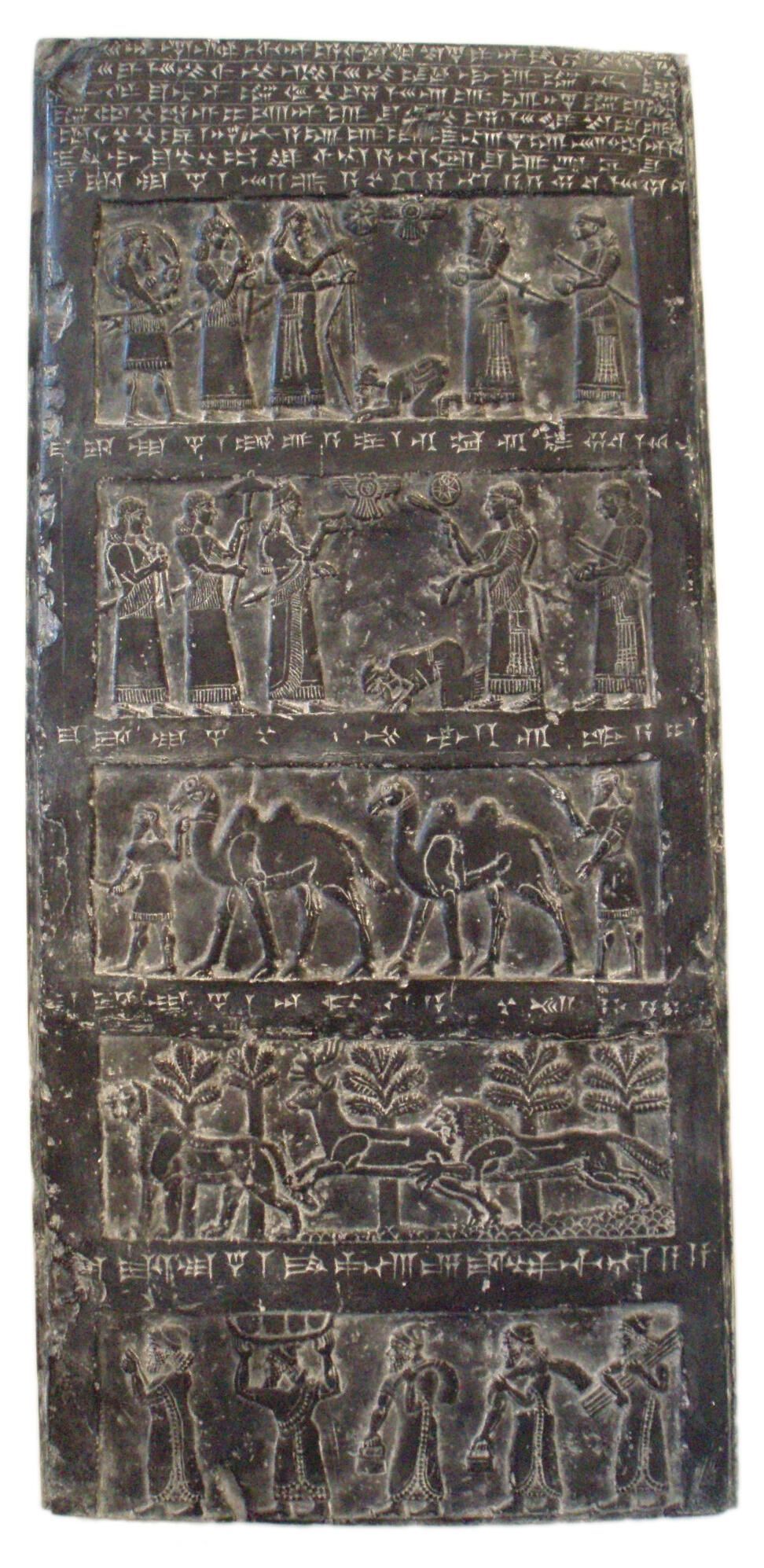Panel of the Black Obelisk of Shalmaneser III
Name/Title
Panel of the Black Obelisk of Shalmaneser IIIEntry/Object ID
98NE0666Description
Black rectangular panel with five bands depicting various human and animal figures. Cuneiform inscriptions are located above and below each frieze. The top panel of the replica shows Sua, the Gilzanite, bringing tribute to Shalmaneser, who is standing left, armed with a bow and arrows and accompanied by an attendant and soldier. Above this scene are the winged sun-disc, divine symbol of the god Assur, king of all of the great gods, and the eight-pointed star, divine symbol of Enlil, creator and father of the gods. The second panel depicts Shalmaneser receiving tribute from Jehu, king of Israel, who is prostrate before the king. Shalmaneser holds a bowl in his raised hand and is sheltered by a parasol held by an attendant. The tribute of the country of Musri, illustrated on the third panel, consists entirely of animals led or driven by attendants dressed in knee-length garments. The fourth panel illustrates two lions hunting a stag in a forest, perhaps reminiscent of the countries which Shalmaneser has conquered. The bottom panel records the tribute of Karparunda of Hattina, brought forth by porters wearing pointed caps.Type of Sculpture
ReliefArtwork Details
Medium
PlasterContext
This replica panel was cast from the original four-sided, black obelisk now in the British Museum. The inscriptions record the annals of thirty-two years of the reign of the Assyrian king Shalmaneser III (r. 858-824 BCE). Most of the illustrations record the tributes brought to Shalmaneser by various vassal kings. The obelisk is famous for its reference to Jehu, King of the Israelites, who is mentioned in the Old Testament. The obelisk also mentions the King Hazael of Damascus who appears in the Old Testament. This piece was donated to the Museum of Antiquities for Dr. Michael Swan, for excellence in graduate teaching supervision.Made/Created
Date made
825 BCE - 825 BCETime Period
Neo-AssyrianEthnography
Culture/Tribe
Near Eastern - Assyrian

